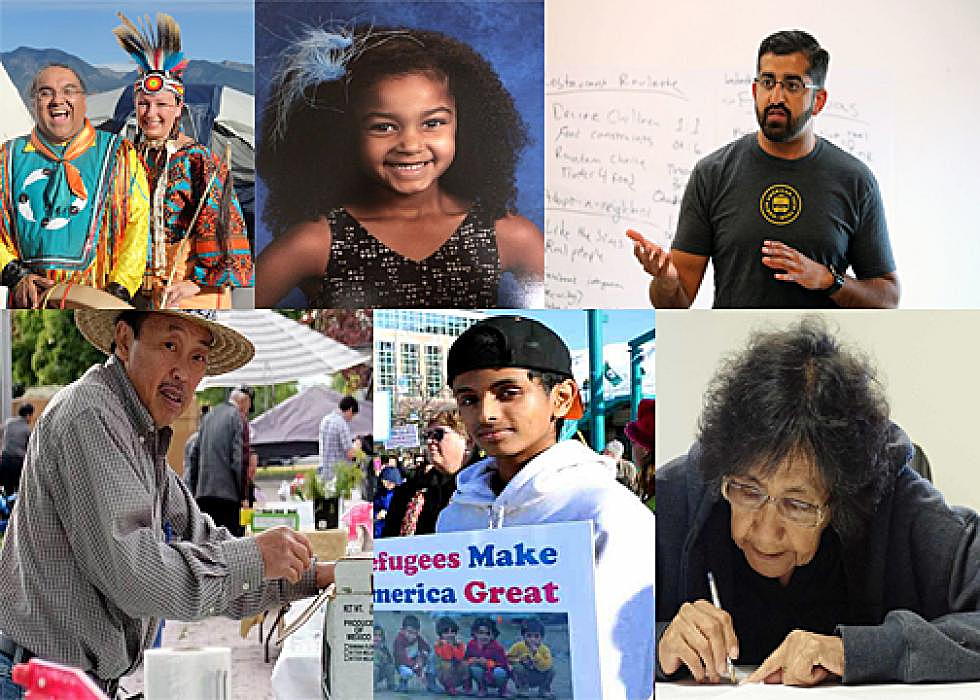
Do Missoula’s tourism brochures show the city’s true colors?
What type of image does Missoula want to portray when promoting itself to the outside world? One of rivers and mountains? A university town? A city where entertainment and art abide?
While such imagery is common in Missoula's marketing campaigns, showing pictures of happy people living a happy life, one key element may be missing from the literature - people who aren't white.
“As a person of color – as a Native person – when looking at those materials, there aren't many people of color in any of the images,” said Ruth Ann Swaney, the newest member of the Missoula City Council and an enrolled member of the Three Affiliated Tribes on the Fort Berthold Indian Reservation in North Dakota.
“In thinking about the history of this place, there's comments on the roots, the deep history, but reading through the materials, there's one statement about this space being originally Salish and Kalispell people, but that's it.”
The issue came to bear this week in the depths of a grinding budgeting session when Destination Missoula took its turn at the podium to unveil its new marketing campaign and discuss the growth of its audience.
While Swaney praised Destination Missoula for its work in promoting Missoula and growing the city's tourism economy, she questioned the organization's literature, suggesting it failed to represent the city's true diversity.
Images on the city of Missoula's website aren't much different. In the carousel of images, one Hmong woman is captured out of focus in the corner. She is selling vegetables and is the only non-white person shown.
“When you go through the travel guide, you talk about culture, but whose culture is represented in the materials here, as well as on the Facebook site?” Swaney asked. “Thinking about Missoula, maybe we aren't as diverse as some places in the U.S., or even in Montana, but our diversity, I feel, isn't well represented, or represented at all in the materials.”
Destination Missoula's website offers a brief overview of the city's 150-year history. The overview opens by saying “The first inhabitants of the Missoula area were American Indians from the Salish tribe.”
That history moves to the arrival of Lewis and Clark in 1805 before advancing to what some view as the city's founding fathers, including C.P. Higgins and Francis Worden. The historic timeline posted below the overview makes no mention of American Indians but rather, it picks up with events starting in 1805 and the arrival of Meriwether Lewis.
“You have the national parks listed, and you talk about encouraging people to check out the national parks and go up to Flathead Lake, but on the map, it doesn't have the Flathead or Browning reservation, and I think that was a missed opportunity,” Swaney said.
“As a Native person, when I came to Missoula, part of my draw to Missoula was how close it was to the Flathead Indian Reservation and knowing there's a tribal community here.”
Barb Neilan, executive director of Destination Missoula, agreed with Swaney. She said the organization plans to release a new tourism guide this October.
It will include greater racial diversity, she said.
“I agree with you, and that's one of the things we're working on with the new guide,” Neilan said. “You'll see more diversity in the guide.”
According to U.S. Census data released in 2016, roughly 92 percent of Missoula's population was listed as white while 3.6 percent was Hispanic. Around 2.8 percent were listed as American Indian, 1.1 percent as Asian and .06 percent as African American.
Census data places the city's population at more than 73,000 residents. That suggests roughly 5,840 residents are non-white. It's a significant number that Neilan said tourism officials must work harder to represent when promoting Missoula.
“We'll do a better job,” Neilan said. “We are trying to make this as inclusive as we can. We have some LGBT writers coming in. Anything we can do to (portray diversity), we're very open to.”
In the overall goals listed in Destination Missoula's Fiscal Year 2018 marketing plan, it does list diversity. It's one of the seven goals listed and reads “welcome all visitors, regardless of age, sex, sexual orientation, race, color, national origin, religion, marital states, veteran status or disability.”
Ward 5 council member Julie Armstrong agreed that Missoula needed to do more to portray its diversity when marketing its opportunities.
“Being from Texas, if you're marketing to Texas and California, whites are in the minority there,” she said. “The more diversity we can show, whether it's virtual or real, will be to our benefit.”
